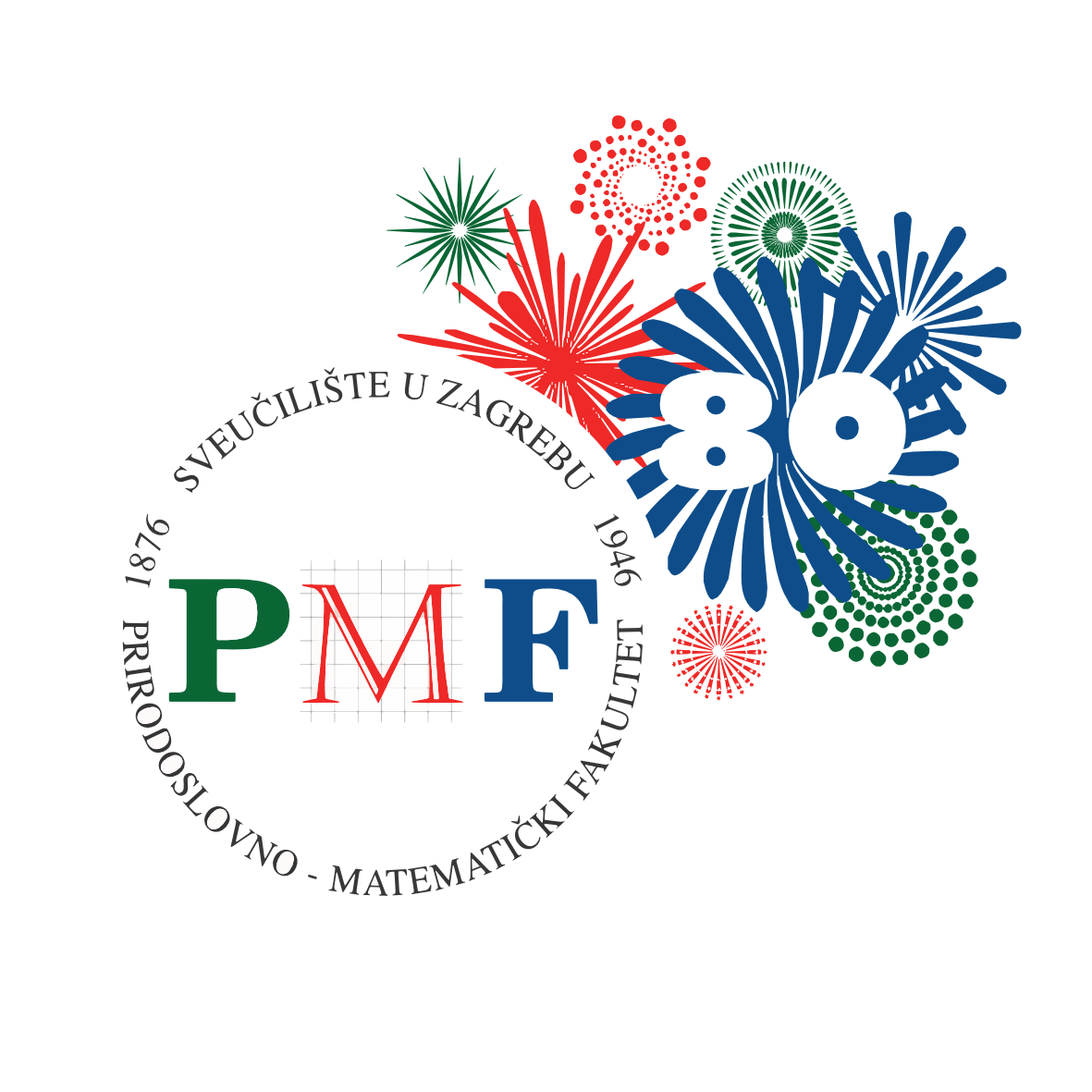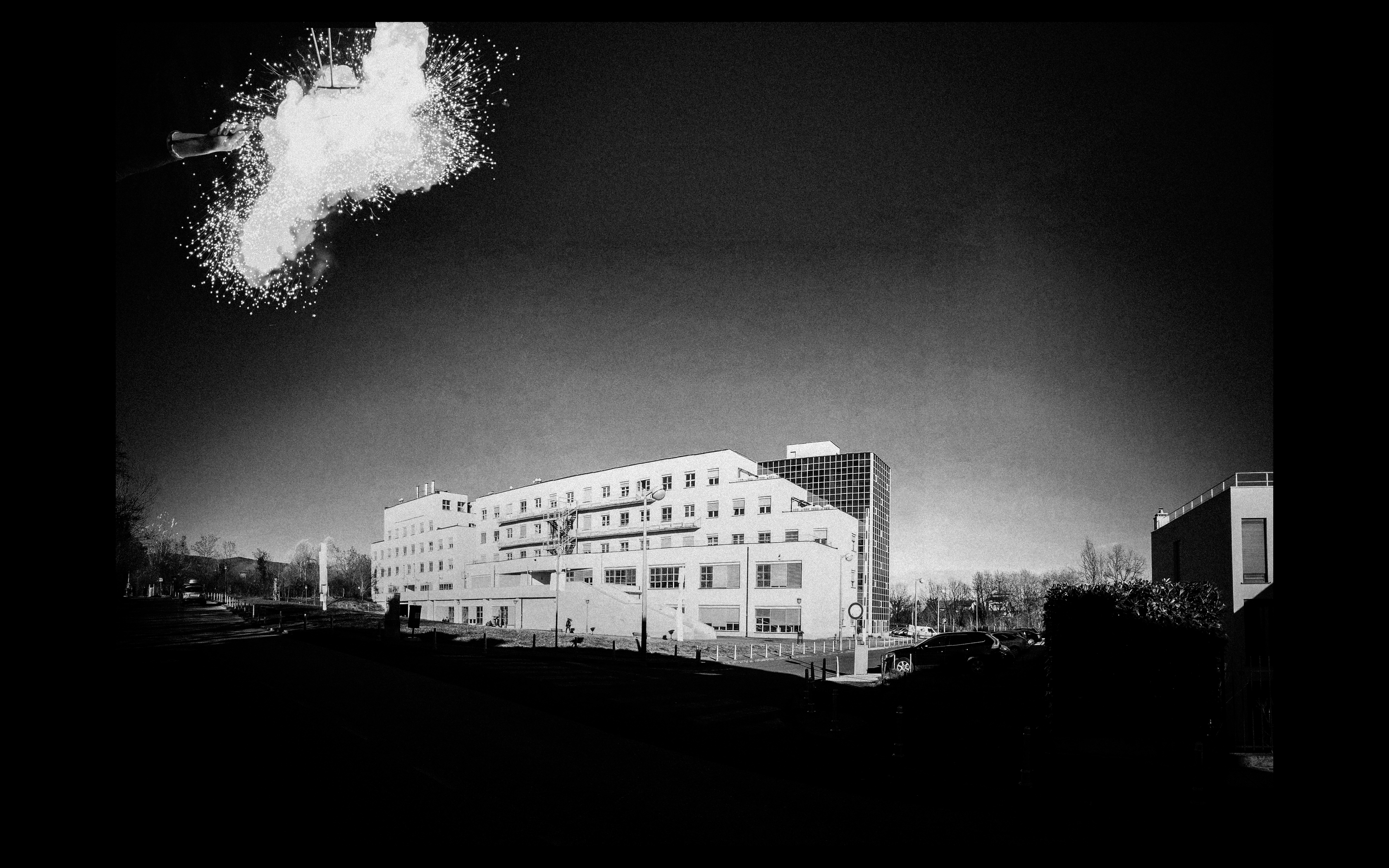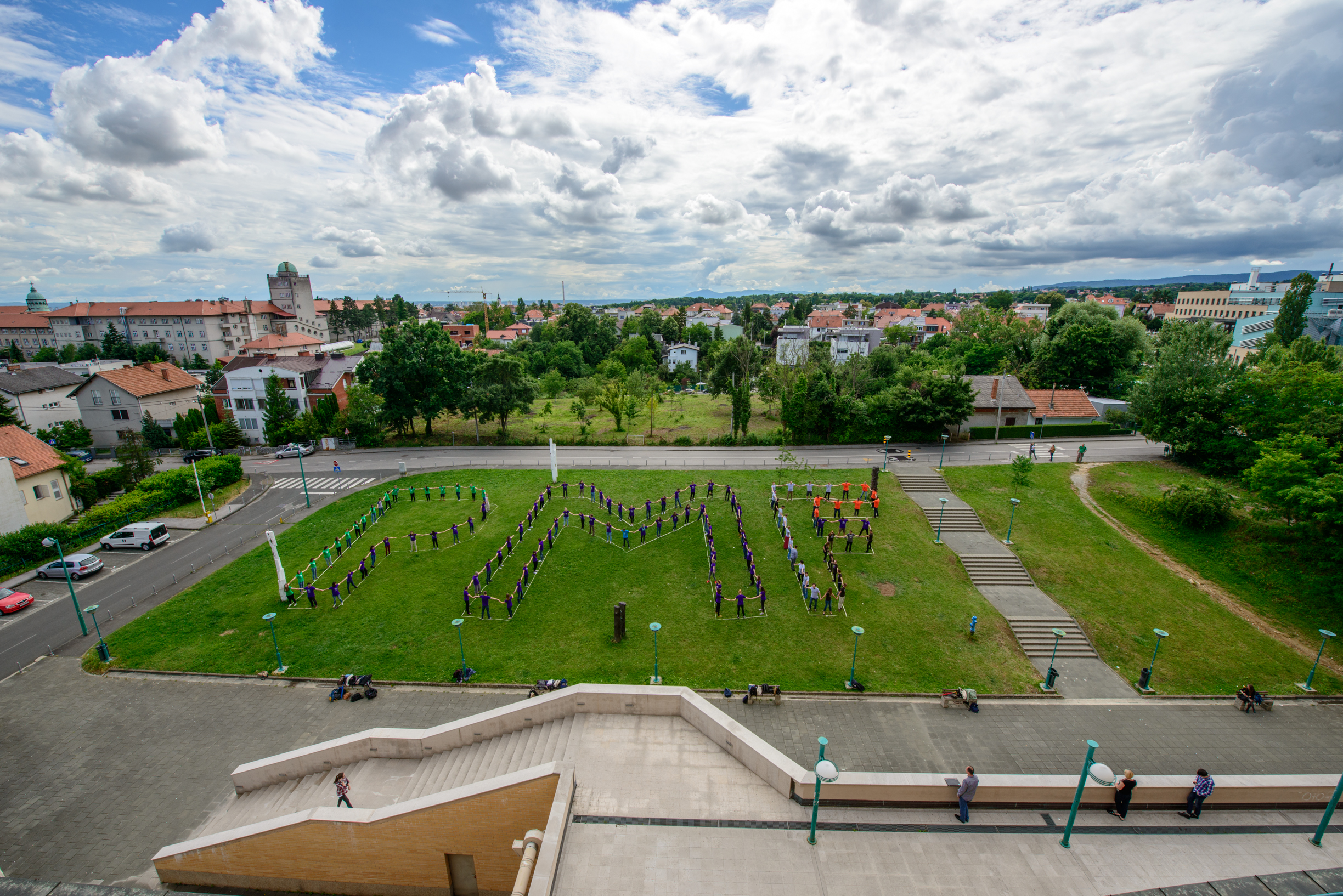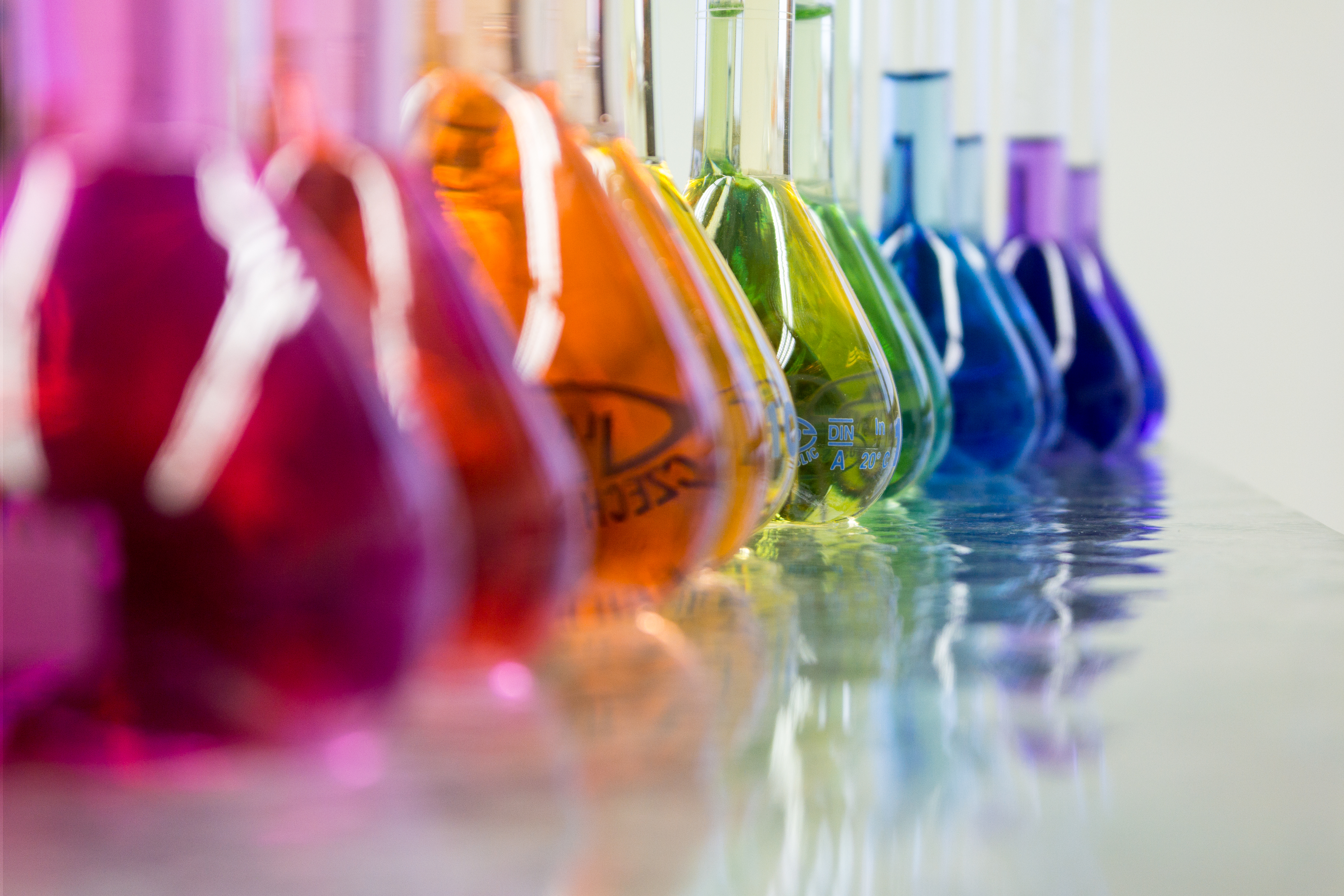The history and development of the Department of Chemistry
The history of the Department of Chemistry begins in 1874 with the founding of the Division of Chemistry at the Faculty of Philosophy, University of Zagreb. In 1876, Aleksandar Velkov gave his first lectures in chemistry. For the purposes of teaching, he opened laboratories located in a small building at 1 Nova Ves, Zagreb. After his untimely death, chemistry was temporarily taught by botanist Bohuslav Jiruš, until Czech scholar Gustav Janeček was appointed as associate professor in 1879. Due to the increased number of students and expansion of the curriculum, Janeček initiated the construction of a new division building at today's 14 Strossmayer Square, which opened in 1884. With such improved conditions, great progress was made in the work of the Division of Chemistry; laboratory exercises were broadened and scientific research was initiated in which more advanced students took part. Particular progress was made in the fields of physical and analytical chemistry. Gustav Janeček strived for decades, as the sole representative of the chemical profession, to extend chemical training, establish departments for individual branches of chemistry, especially analytical and physical chemistry, and divide the department of general and experimental chemistry into the departments of inorganic and organic chemistry. At Janeček’s initiative, the construction of a new building of the Division of Chemistry at 20 Marulić Square began. The building was finished in 1919, but it was not handed over to the Department of Mathematics and Natural Sciences of the Faculty of Philosophy, as originally intended, but was given to the newly established Higher Technical College. After Janeček's retirement in 1921, the Russian chemist Nikola A. Pushin came to the Division and became the Head of the newly-established Subdepartment of Physical Chemistry. After Pushin left Croatia in 1928, Gilbert Flumiani took over the Division, the head of which he remained until the end of World War II. At that time, two departments had already been formed, the Pharmaceutical and the Chemical. During the war and after it ended, many university institutions were reorganized, so the Department of Pharmacy was singled out from the Division of Chemistry in 1942 as the new Faculty of Pharmacy, and in 1946 the Department of Mathematics and Natural Sciences was separated from the Faculty of Philosophy. The Department of Mathematics and Natural Sciences changed name and the newly-established Faculty of Science was organized into six departments. One of them was the Department of Chemistry, which initially consisted of the newly-founded Institute of Chemistry, headed by Krešimir Balenović, and the Physicochemical Institute with Božo Težak as head. The Institute of Chemistry covered all fields of chemistry except physical chemistry: general and inorganic chemistry was taught by Stanko Miholić, organic chemistry and biochemistry was taught by Krešimir Balenović, and analytical chemistry was taught by Ladislav Filipović. Following the first division into the two aforementioned institutes, the other newly-established divisions within the Department separated. Thus, in 1952, the Laboratory of General and Inorganic Chemistry (later changing its name to the Division of General and Inorganic Chemistry) become a new institution, with the new head being Drago Grdenić, and in 1962 the Division of Analytical Chemistry with Ladislav Filipović as head. Already in 1959, the Physicochemical Institute changed its name to the Division of Physics and Chemistry and was headed by Božo Težak. After the separation of individual divisions from the Institute of Chemistry, in 1961 it changed its name to the Division of Organic Chemistry and Biochemistry, headed by Krešimir Balenović. All four divisions began to develop teaching and especially scientific activities.
Analytical chemistry has a long tradition within the Department of Chemistry, dating back to the times of Gustav Janeček. The first head of the Division of Analytical Chemistry Ladislav Filipović worked predominantly in organic microanalysis. His successor, Marko Herak, performed radiometric research. Subsequently, more important investigations into the analytical application of complexes, especially Schiff bases, organophosphorus compounds, and 4-pyridone derivatives began. Under the leadership of Biserka Tamhina, these complexes were studied as potential reagents for metal extractions. In addition to classical spectroscopic methods, plasma spectrometry was applied from 1983 (Marija Široki). With the arrival of Zlatko Meić to the Division, other spectroscopic methods (IR and Raman spectroscopy) were introduced.
Biochemistry began to develop at the Department under the guidance of Željko Kućan, who becomes head of the Division of Biochemistry immediately after its establishment in 1995. He initiates research into nucleic acids and protein biosynthesis. Research gained particularly strong momentum with the work of Ivana Weygand-Đurašević, who was particularly focused on enzyme aminoacyl-tRNA synthetases.
Research in the field of physical chemistry, which date back to Janeček, gained its first major impetus through the work of Božo Težak with colleagues in the field of colloidal chemistry. Progress in this area, which comprised the introduction of new experimental techniques and new mathematical and theoretical models applied to the study of interfaces and electrolytes, was made by the Nikola Kallay group. An approach to the investigation of electrolyte solutions (ion pairs and metal complexes with bioligands) via spectroscopic, thermodynamic, and electrochemical methods using chemometrics was developed by Vladimir Simeon and associates. Contributions in the area of factor analysis were of particular note. We should also highlight here studies in the field of atmospheric chemistry and spectroscopy (Tomislav Cvitaš), crystal growth (Nada Stubičar), and solid/liquid phase transitions (Đurđica Težak).
Within the field of inorganic chemistry, we should point out the systematic work on organomercury compounds, which already then had somewhat of a tradition that began with the works of Drago Grdenić and continued with the works of Boris Kamenar and Milan Sikirica. Furthermore, the syntheses of new organometallic compounds, the primary research focus of Branka Korpar-Čolig, should also not go without mention. Of further importance is the discovery of tetra-mercurated methane and its derivatives and the determination of their structures. The development of “pure” inorganic chemistry was accompanied by the development of X-ray structural analysis and solid-state chemical synthesis methods. X-ray structural analysis became a research method almost simultaneously as in the rest of the world and the Division of General and Inorganic Chemistry became the centre of the Croatian Crystallographic Community within the Croatian Academy of Sciences and Arts. Many associates were active in this field, among whom Ivan Vicković stood out. Research also covered transition metals of groups 5 and 6 and the coordination compounds of the first transitional series, which were studied by Branko Kaitner. Mirko Kesler, Ivo Perina, and Milan Sikirica contributed to the development of teaching methodology in chemistry.
More extensive studies into organic chemistry began with the work of Krešimir Balenović. Synthetic organic chemistry and stereochemistry saw a strong development, especially in the areas of amino acids, polyoxo compounds, organic sulfoxides and selenoxides, and muscarinic derivates. This research was continued by Ante Deljac. New research in synthetic chemistry was performed by Mirko Poje, who examined the mechanisms of purine oxidation, as well as by Ante Deljac and Zlatko Binenfeld, who synthesized new oxime derivatives of potential interest as antidotes. New changes in teaching and research within organic chemistry were made in 1970 with the arrival of Dionis Sunk to the post of head of the Division of Organic Chemistry and Biochemistry. Scientific and teaching activities began to be undertaken in the field of physical organic chemistry. The mechanisms of reactions were investigated by the method of kinetic isotope effects. Following efforts by Hrvoje Vančik, scientific work was directed towards the use of modern methods of matrix isolation of unstable molecular species, thereby introducing a new discipline, cryochemistry. Zlatko Mihalić developed computational ab initio methods for calculating molecular structures and transition states. The application of enzymatic catalysis in organic synthesis, an area that had by then become important globally, was developed under the leadership of Srđanka Tomić-Pisarović.
The Department of Chemistry today
Today, there are five divisions within the Department of Chemistry: Division of Analytical Chemistry, Division of Biochemistry, Division of Physical Chemistry, Division of General and Inorganic Chemistry, and Division of Organic Chemistry.
The Division of Analytical Chemistry relies on classical analytical methods to improve sensitivity, selectivity, and application to various analytical systems. New methods for the extraction and/or spectrophotometric and spectrofluorimetric determination of analytes based on the interaction of metals and different ligands are developed. Conformational and structural analysis of bioactive molecules of macrolides, thiosemicarbazones, and their metal complexes is performed using experimental (NMR, crystallography, infrared, and Raman spectroscopy, mass spectrometry) and computational methods. Infrared and Raman spectroscopy are used to investigate the structure of unsaturated compounds and determine the composition of real samples. Using surface-enhanced Raman scattering, interactions between biological molecules and potentially biologically active compounds are investigated. The Raman spectroscopy method is developed as an in-line process analytical method for monitoring and controlling the chemical and physical processes of bioactive molecules and drugs.
Within several projects at the Division of Biochemistry, the structure, function, and interactions of proteins and nucleic acids involved in the translation of a genetic message are investigated. We study aminoacyl-tRNA synthetase enzymes, which catalyse the esterification of the transfer of RNA to the corresponding amino acids. Enzymes and other proteins are produced by genetic engineering methods in natural or modified forms. The mode of enzymatic activity is inferred on the basis of kinetic parameters of biochemical reactions, by determining substrate binding constants, and by studying the action of inhibitors. The biological relevance of engineered changes is verified by in vivo genetic methods. In collaboration with crystallographers, the spatial structures of synthetases and their complexes with small molecules and macromolecules are determined and analysed.
The Division of Physical Chemistry traditionally devotes a considerable amount of research to colloidal chemistry and the physical chemistry of macromolecules. Research in the field of colloidal and interfacial chemistry deals with the development of theoretical models and experimental techniques. As part of the physical chemistry of macromolecules, the properties of polyelectrolytes and proteins in solution, and their adsorption on solid substrates are studied. The thermodynamics and kinetics of reactions in solutions are also studied and chemometric methods are developed continuously. Quantum-chemical methods are used to account for the surfaces of potential energies and spectroscopic properties of molecules. Physicochemical methods study processes in the atmosphere. Chemometric methods are developed and applied to interpret complex experimental data and reduce them to significant values.
Presently, the Division of General and Inorganic Chemistry conducts research in the fields of organic and coordination compound chemistry, solid state chemistry, supramolecular chemistry, protein chemistry, and the chemistry of other biologically active compounds. Furthermore, the Department works on developing the methodology of teaching chemistry. Classical chemical synthesis is used to produce organic compounds such as diketones, triketones, and Schiff bases, which are then mostly applied as ligands in the synthesis of coordination compounds with metals, including polyoxometalate species. The produced compounds contribute to the understanding of the nature of the weak bonds between coordinatively unsaturated metal atoms and electron donor atoms or groups, as well as to the understanding of the mechanisms of homogeneous and heterogeneous catalysis, biological activity of transition metal complexes, and metalloenzymatic activity. The influence of weak intermolecular interaction on molecular recognition and on the structure and properties of molecular solids is studied within the framework of solid state chemistry. The development of supramolecular synthesis methods enables the design of the crystal stacking of one-component and multi-component systems, co-crystallization, and polymorphism.
At the Division of Organic Chemistry, classical and biocatalytic methods of organic synthesis are used to synthesize new compounds that contain monosaccharides for which there are receptors on the membranes of cells of living organisms. Solid state reaction mechanisms based on the model system of aromatic nitroso monomer dimers (azodioxide) are also studied. Within the framework of a project in the field of computational chemistry, modern molecular modelling methods are utilised to study the mechanisms of various reactions of organic compounds, and in particular the structures and properties of the reactive species that participate in these mechanisms. Special attention is given to the impact of solvents on the course and rate of these reactions.

 Pristupačnost
Pristupačnost

